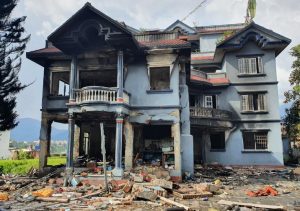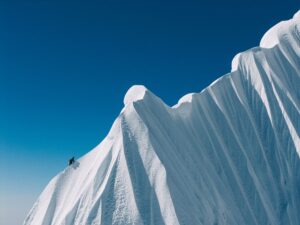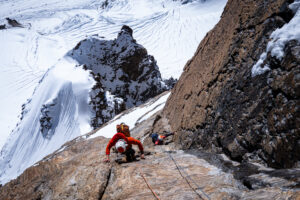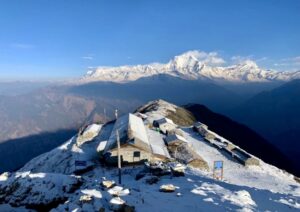While higher fees await Manaslu and Everest climbers this fall, the Nepal government is promoting the far-flung regions of western Nepal by waiving the royalty fees on 97 peaks, including several unclimbed ones. So why are hard-core climbers not exactly enthusiastic about this new initiative?

The south face of Mt. Api in western Nepal. Photo: Wikipedia
Seventy-seven of these so-called “free peaks” lie in Karnali province and another 20 in neighboring Sudurpaschim province, both in western Nepal. According to The Himalayan Times, three of them surpass 7,000m: Saipal (7,030m), Api (7,132m), and Api West (7,076m). Outfitters hope that this region could become popular with future Everest climbers, who are now required to have previous experience at 7,000m.
The measure will be active for the next two years and aims to promote these two under-visited regions. However, previous initiatives in the western regions between 2008 and 2018 raised very little interest.
The Himalayan Times reported that only 68 climbers visited these peaks between 2023 and 2025. This was mainly because of the region’s lack of infrastructure and poor connections to Kathmandu. Beyond that, climbers experienced with western Nepal told ExplorersWeb that ditching royalty fees just won’t make much of a difference.
Royalty fees=peanuts
The reason is that royalty fees rarely amount to a significant chunk of an expedition’s cost.
Three-time Piolet d’Or winner and exploratory climber Mick Fowler of the UK knows western Nepal and the remote regions of the Himalaya well.
“The peak fee is a very small percentage of the cost of an expedition to western Nepal,” he told ExplorersWeb. “So, in my opinion, this initiative is unlikely to have a significant impact.”

Mick Fowler on the summit ridge of Gave Ding in western Nepal. Photo: Paul Ramsden
“The infrastructure has improved since my last visit [10 years ago],” Fowler added. “Even so, it takes two short, weather-dependent flights from Kathmandu to get [there]. The peaks are generally not as spectacular as those further east, the region is more expensive, and the transportation is less reliable. These are the things that put people off, not the cost of the peak fees.”
John Kelley of the U.S., who also targets some of the loneliest peaks in Nepal, went further. He explained that a “climbing permit” involves much more than the peak’s relatively insignificant royalty fees. Royalty fees vary wildly, depending on altitude, time of year, and other factors, but are rarely more than $500 and often just $200. Nepal is only waiving this royalty fee, nothing else.
“Articles speak of ‘climbing fees waived,’ but that is an incorrect statement,” Kelley explained. “Permits will still be around $1,500 for each peak below 6,500m, and around $3,000 between 6,500-7,000m.”
So, what’s in a climbing permit, besides the royalty fee? Well, it’s complicated.
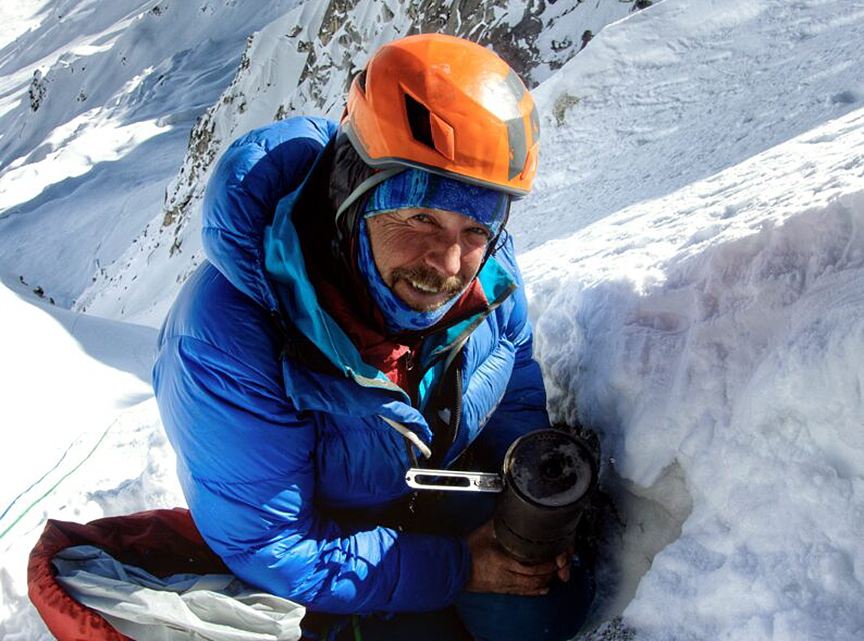
John Kelley. Photo: Benjamin Billet
What’s in a permit?
“The permit is broken down into several different payments: insurance for all the porters, cooks, guides, more expensive insurance for the liaison officer, conservation area entrance fees, royalty fees, etc.,” said Kelley. Items such as insurance amount to much, much more than royalty costs.
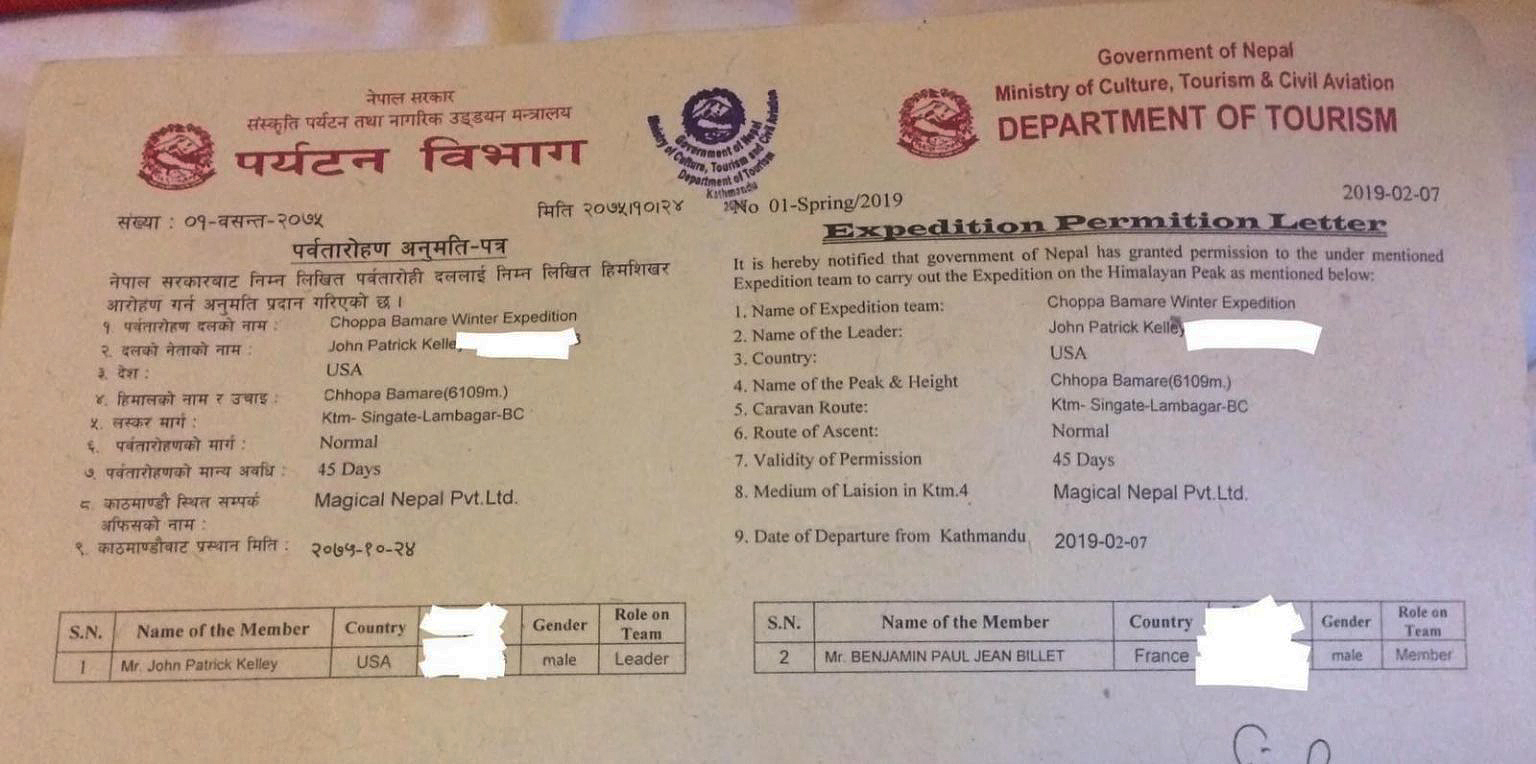
John Kelley and Benjamin Billet’s climbing permit for Chhopa Bamare in Rolwaling. Photo: Benjamin Billet
It’s also worth remembering that no foreigner, whether an alpine-style climber or a commercial client on an Everest expedition, can apply for a climbing permit directly. They must hire the services of a local operator. These companies will include all the above-mentioned expenses in their bill before granting a climbing permit from Nepal’s Department of Tourism.
“It’s crazy the amount of paperwork required for the permits, it’s confusing beyond belief,” Kelley said.
You can check the royalty fees of all peaks on the official Nepal Peak Profile website. Just note the new fees — or the waived ones — are not yet updated. Mt. Api, for instance, is supposed to have a royalty fee of $500 in spring and $250 in autumn — not much in the grand scheme of things.
Wild west
In the end, western Nepal will continue to attract those few climbers looking for virgin peaks in remote, lonely areas. A couple of hundred dollars will not be a decisive factor.
As an example of such an expedition, see the video below about a climb of Salimor Khola in the Api Valley:

